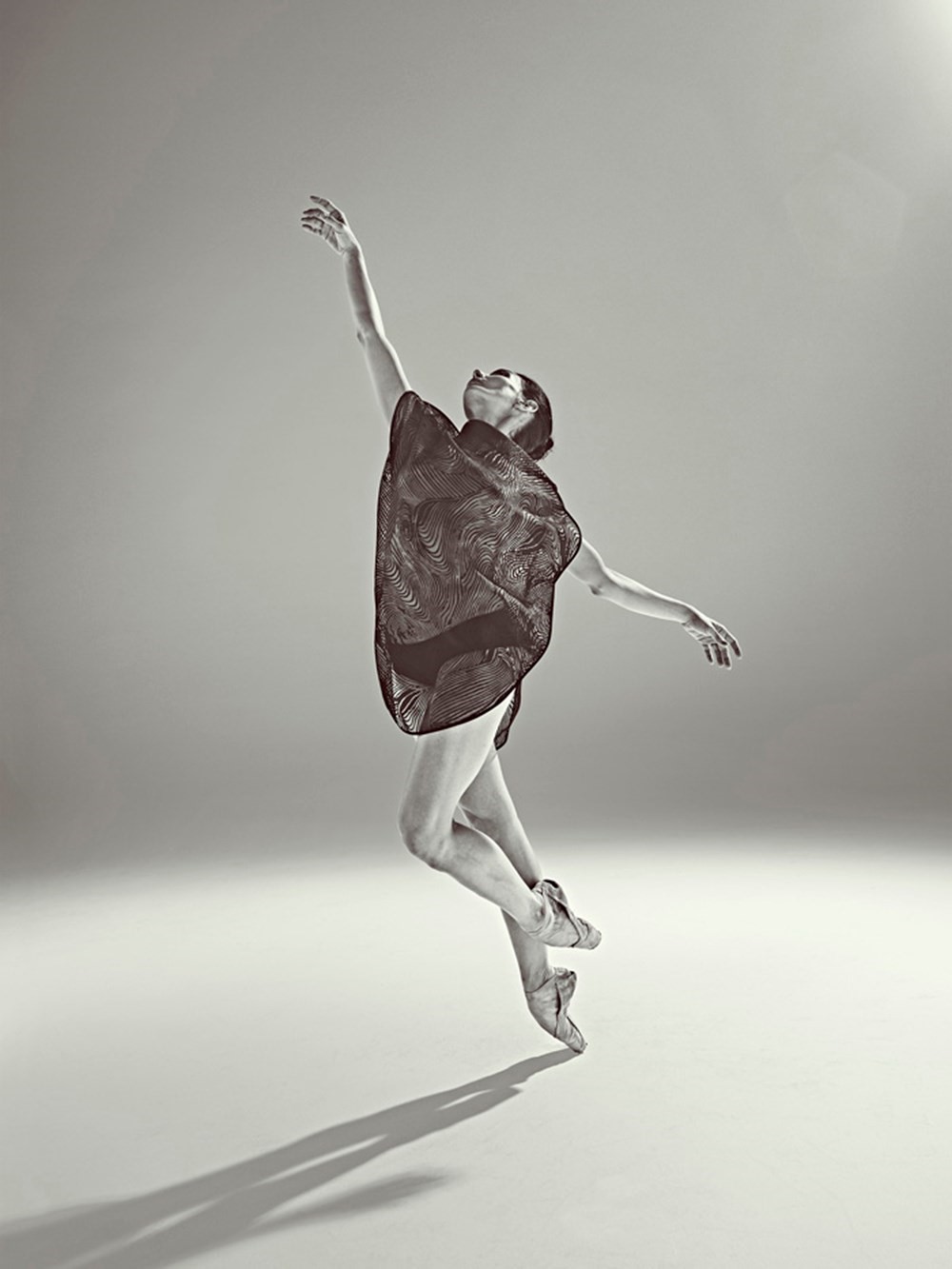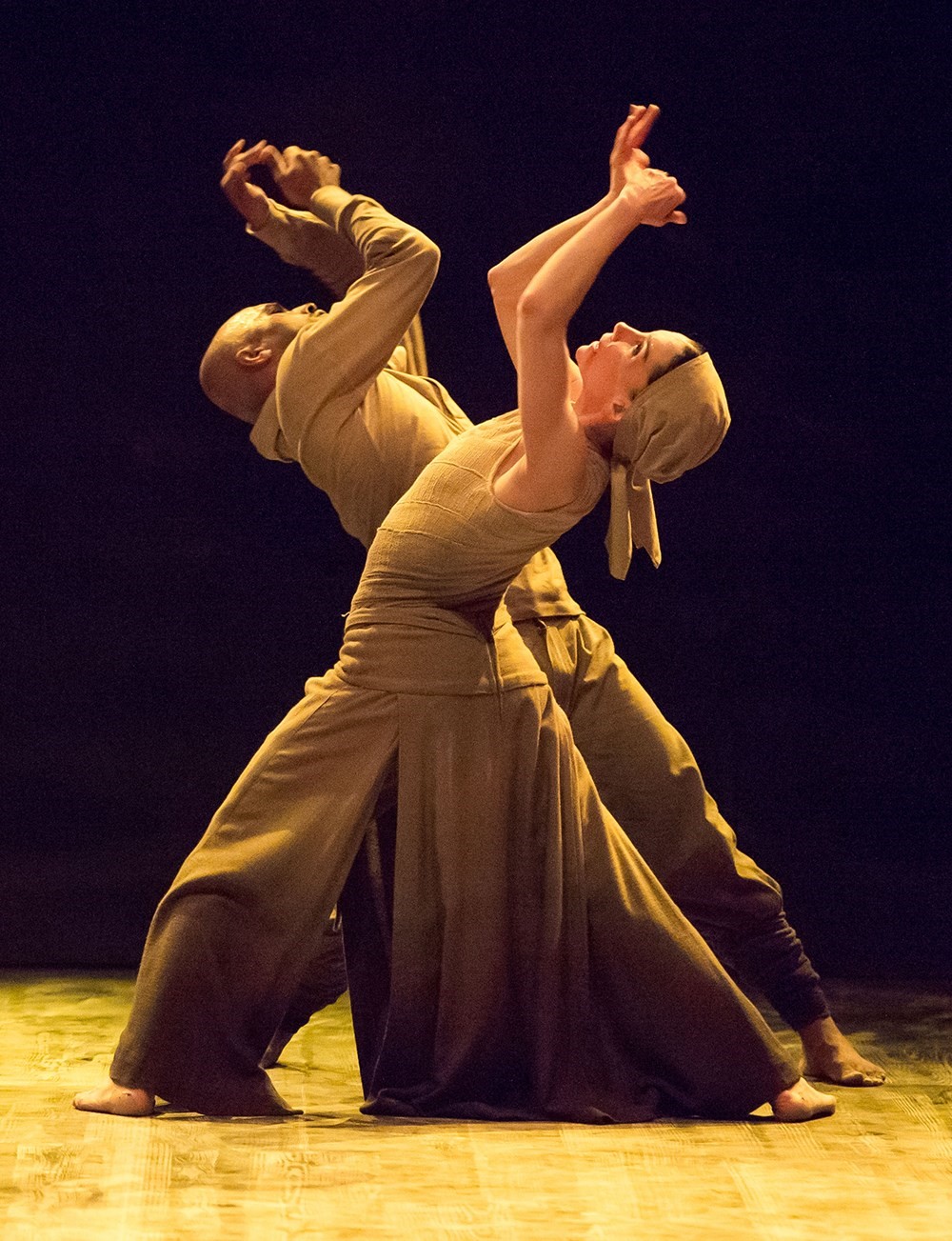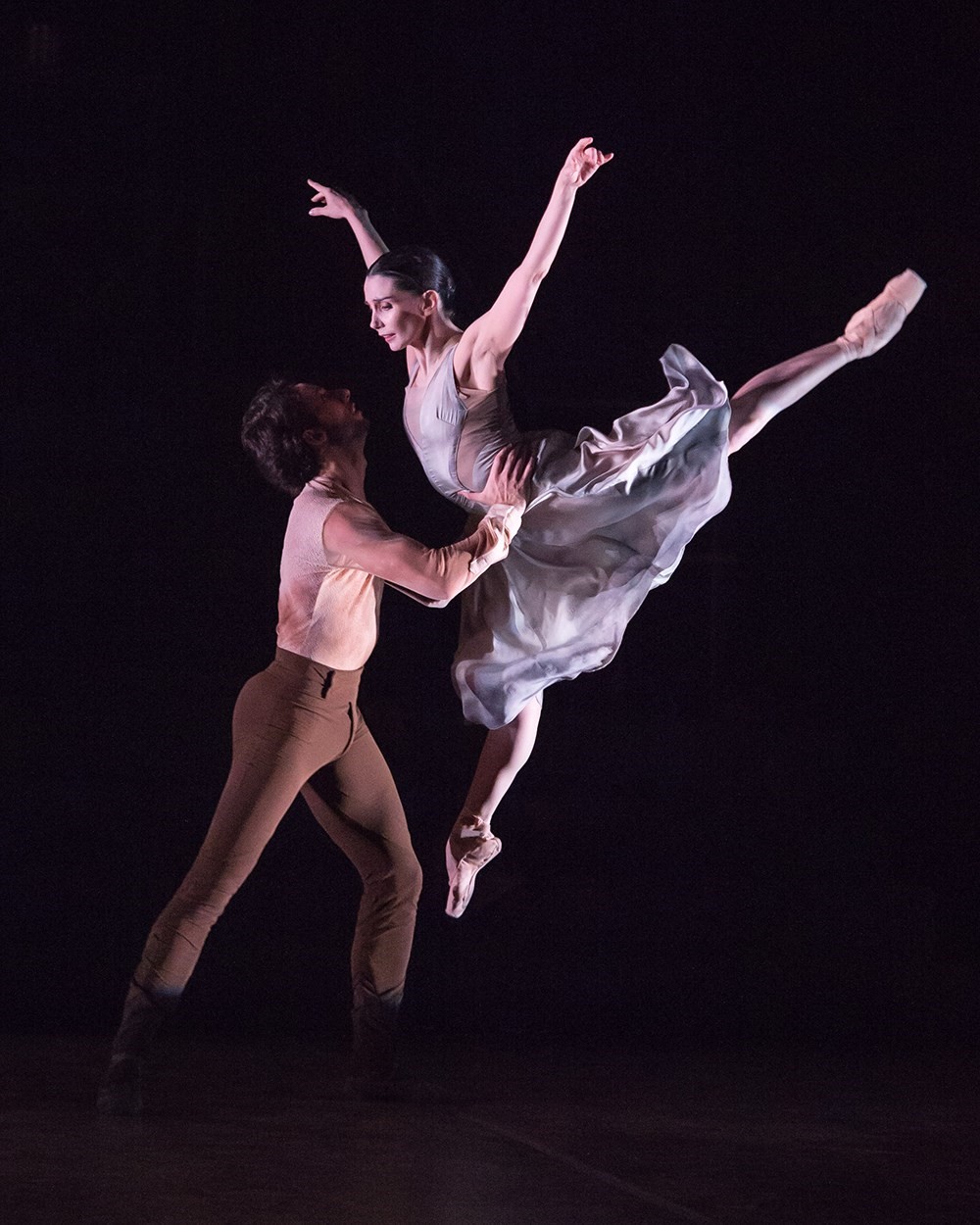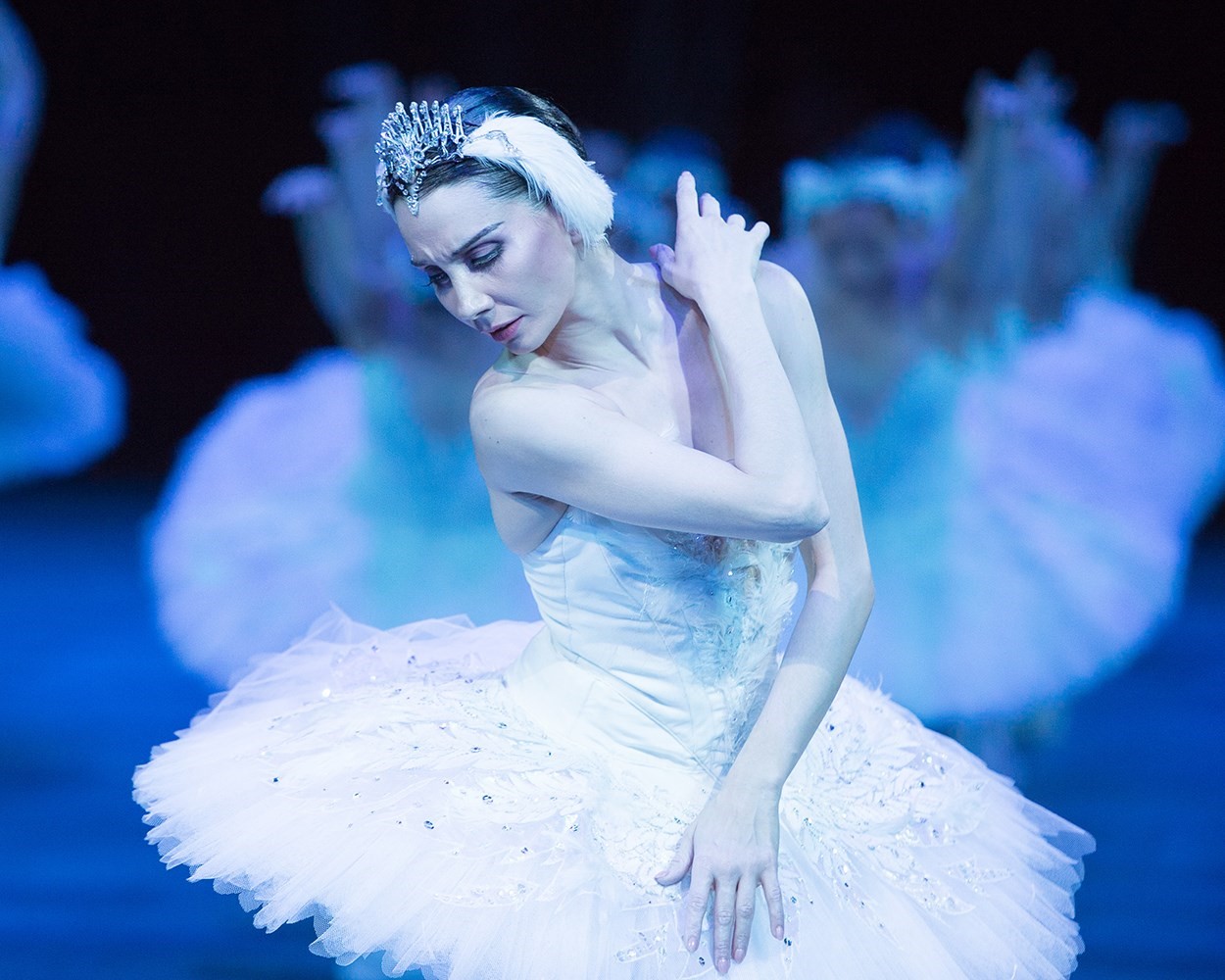The headquarters of the English National Ballet currently lies on a quiet mews tucked away behind the Royal Albert Hall. An unassuming home, it belies an illustrious history that stretches all the way back to the Ballets Russes. Founded by Alicia Markova and Anton Dolin (former dancers with Diaghilev's seminal company), alongside impresario Julian Braunsweg, in its 66 years the ENB has staged works by a glittering roll call of luminaries, from Rudolf Nureyev all the way to Akram Khan. Headed since 2012 by former Royal Ballet prima ballerina Tamara Rojo, the company is currently enjoying a spirited renaissance.
We meet on a grey day in March, just a few weeks before She Said, a programme of three newly commissioned ballets by female choreographers is due to premiere at Sadler's Wells. Inside, the place has all the bustle of a school, albeit one with an unusually graceful population. Rojo looks scarcely older than a teenager herself, with smooth, fine-boned features and long black hair. Wearing a simple blue Helmut Lang dress and black boots, she is at her desk when I arrive. It's where one might find her most afternoons, after a morning spent first with her sports scientist, followed by classes and rehearsals. Her office is neat and unostentatious, with a view north towards Hyde Park, her walls adorned with postcards and photographs. Now in her fourth year at the company, she is looking ahead to several exciting projects. Coming up first is She Said, in which Rojo will dance as Frida Kahlo in one of the new pieces, called Broken Wings; Akram Khan's take on the classic ballet Giselle in the autumn, and, in 2017, a production of Pina Bausch’s The Rite of Spring. The latter production will mark the first time it has been danced in the UK since Bausch’s death and ENB are only the second company, after Paris Opera Ballet, to be entrusted outside of Tanztheater Wuppertal to perform the work.

The idea for She Said had been in Rojo's mind even before she started at ENB. Though she has danced some of the greatest female roles – Odette/Odile in Swan Lake (don't ask her about Darren Aronofsky's film), Juliet, Manon, and Carmen to name a few – it struck her that she had never once performed in a ballet choreographed by a woman. “Before I retired I thought, I should at least try once,” she says, in her softly accented English. (Rojo was born in Canada and grew up in Spain).
The resulting new pieces, by an international mix of choreographers (Belgian-Columbian Annabelle Lopez Ochoa; Yabin Wang, a Chinese actress and choreographer known for her collaborations with Sidi Larbi Cherkaoui, and Canadian Aszure Barton, who has created work for Baryshnikov among others), look set to be a fascinating tapestry of different styles and languages.
Each piece is accompanied by a new score, the costumes – especially for Broken Wings – promise to be breathtaking and Grayson Perry has designed the front cloth. “You know when Diaghilev used to say to the artist, ‘astonish me’? Lots of people are going to be astonished,” she laughs. “I'm excited to see the reaction. Luckily I'm going to be on the other side.” Perry, for his part, has dropped hints about a “landscape of phalluses.”

“When I was a teenager, I was slightly obsessed with Frida,” Rojo continues, of dancing the part of Kahlo. “She had such a dramatic life that for a teenager, she was the perfect iconic figure. It’s all about love and lust and suffering and the self […] I think what Annabelle wants [to bring out] is her strength and her positive outlook on life. That even though life was rather hard on her, she always looked for the opportunities that came out of suffering, how to be joyful and lascivious, even, and continue to feel like a woman regardless of what her body was going through or what it looked like.”
It’s an exciting time for the company. Brand new premises are being built in Canning Town, housing a 200-seat theatre and bringing the company and its associated school together under the same roof. As a mark of the high standing ENB now enjoys, in addition to becoming Sadler's Wells’ first Associate Ballet Company in 2014 and being entrusted by the Pina Bausch foundation to perform Rite of Spring, the company has been invited for the first time to dance at the Palais Garnier in Paris this summer. The latter, Rojo says, is like “preaching at the Vatican.”
Indeed, the company has achieved a lot in a very short space of time, but Rojo’s trajectory through the ballet world has been nothing if not fast and virtuosic. She arrived in the UK from Spain in 1996 to dance for the Scottish Ballet, and, a year later, was invited to join the ENB, becoming a principal in just six months. Three years after that, she became a principal at the Royal Ballet, where for 12 years she dazzled audiences with her almost preternatural grace and skill, and era-defining duets with the Cuban star Carlos Acosta. Dancing at the Royal Opera House to enchanted audiences must have been a heady experience, but what first drew Rojo to a ballet class in her school gym one rainy afternoon as a child is the same thing that calls her to the stage now. “What I loved about ballet was that it was very private,” she remembers. “I’m an only child and I didn’t enjoy school that much. It was too much to deal with, too much to respond to, too many people wanted too many different things, you know? And then I found in the school this kind of oasis of introversion.”

Slowly, however, she came to terms with the idea of performing for an audience but, for her, it remains “an intimate exercise,” something “between me and my partner, my dancers. I’m aware of the audience and I share emotion but it’s not a showcase. It’s still very much a private space I allow people to look into.”
However austere and holy ballet might have seemed as child, she was not immune to pop culture, absorbing everything from Madonna in her Like a Prayer prime, to Grease, Dirty Dancing, Flashdance and Fame. (Her favourite character in the 80s hit film was Hilary Van Doren, played by Antonia Franceschi, who would go on to dance for Balanchine at the New York City Ballet. “Who wouldn’t want to be Antonia?”). “Those things were even more important because they were more accessible,” Rojo avers. “Anything that meant that moving was cool.” Then Rojo and her fellow budding ballerinas would mainline videos of Sylvie Guillem. “She changed the way we ought to be dancing,” Rojo says, still in awe of the French former étoile. "Suddenly the range of movement was so much wider. You had to have a completely different way of moving.” She remembers a cringe-inducing moment as a teenager when she and her friends charmed the doorman of a Madrid theatre to let them watch Mademoiselle Non, as she later became known, during a closed dress rehearsal. Rojo had the daunting job of asking for her autograph. “To be honest, she was not pleased, and I understand that but at the time it was terrifying!” says Rojo, laughing (the two are now friendly, their paths having crossed at the Royal Ballet). “I have to give it to her, she did sign all of our pictures.”
There is a quiet determination to Rojo. Her approach to ballet is reverent but at the same time, modernising. You sense it's an approach to the form that has perhaps left her frustrated in the past. "What I find about certain dance companies that are very studious in their ways is that they put so much emphasis on tradition that there is no space for the artist of today. No space for their soul. No space for the artistry to be a part of the process. And I think that is simply a mistake," she says. It's a well-intentioned mistake that she can understand, because ballet has been "quite a fragile" art that relies on an oral tradition and a direct link to the masters of the past, from Petipa to Vaganova and so on.

But, she says, “the problem with that is that I believe the art form has only progressed when the artist of the moment had the freedom to take the art form forward, to be relevant to the audiences of today. If I went out on stage now and tried to imitate the facial expressions of a dancer from the 1950s, it would be so, so far from anything that an audience today will have seen, and it will make ballet seem completely stiff and unapproachable. We see it in the theatre, no one goes out on stage in tights and goes [affecting Olivier] 'To be!', and changes the whites of their eyes twice before they say the next sentence. But somehow very often we are asked to do exactly that. If you're an artist who has an opinion, who wants to do things differently, who is inspired by the times and other art forms, it is actually really difficult to then try and fit into someone else's body.”
Tiny though she is, Rojo is too strong and forthright a personality to be contained by anyone else's mould. She is proud to be shaking things up at ENB, still a relatively small company but increasingly known for its dynamism and rebelliousness. Asked what she is proudest of, she reflects: “That my dancers believe in my vision. That the company, the orchestra – we're all in this together. We're a touring company, and you have to share the good and the bad, the success but also the really crap bed and breakfast, the bus that breaks down at two o'clock in the morning in the middle of the road and the delayed flights. You share everything.” Looking back on her experience as a dancer, she believes that she was probably happiest during her time at ENB because then, “I felt part of something. And I knew that that's what I wanted to give back to the company. That pride.”

She Said runs from April 13-16, 2016 at Sadler's Wells, London.
